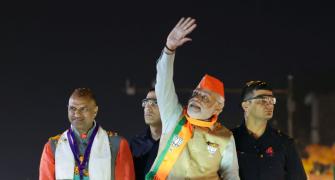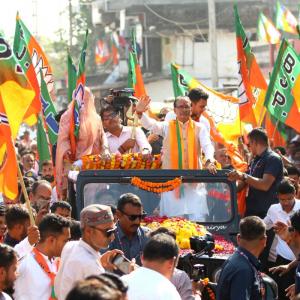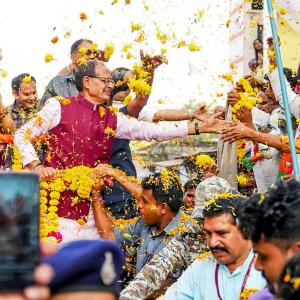In 2022, Rajasthan met for 30 days, Chhattisgarh 18 days, MP and Mizoram for 15 each, and Telangana for 10 days.

A worrying trend is visible in the way legislative assemblies function.
The average number of days the assemblies meet has been shrinking across states in recent years.
Rajasthan, Madhya Pradesh, Chhattisgarh, Mizoram and Telangana, where elections are underway, met for less than 30 days on average annually between 2019 and 2023, shows data from PRS Legislative Research.
Compared to the previous term (2014-2018), the average sittings fell for all except Rajasthan, which recorded a marginal increase, from 28 days to 29 in the current term.
The fall was the sharpest for MP, where the assembly met for barely 16 days. In 2014-2018, it had met for 27 days.
In Chhattisgarh, the legislature's business days shrank from 29 to 23, and in Telangana, from 26 to 15 (see chart 1).

Barring Telangana, for which data isn't available, Chhattisgarh and Mizoram functioned for five hours per meeting on an average between 2019 and 2023.
Rajasthan functioned for seven hours and MP for four hours.
"Fewer sitting days mean fewer days for deliberating on key legislations, fewer questions asked to the government, and fewer opportunities for MLAs to represent the interest of their constituents," says Chakshu Roy, head of legislative and civic engagement, PRS Legislative Research.
This trend needs to reverse so that our legislatures can strengthen Indian democracy through open debates and scrutiny, he adds.
While the Constitution does not prescribe the minimum number of days state assemblies or Parliament must meet, the National Commission to Review the Working of the Constitution, which was set up in 2000, had recommended that the 'Houses of state legislatures with less than 70 members should meet for at least 50 days in a year and other Houses for at least 90 days.'
The Karnataka assembly met for 45 days in 2022, the highest among the 28 states and Union Territories for which data is available.
West Bengal and Kerala followed with 42 days and 41 days, respectively.
Rajasthan, meanwhile, met for 30 days, Chhattisgarh 18 days, MP and Mizoram for 15 each, and Telangana for 10 days. This was lower than the average of 21 days for the 28 states and UTs.
"The one way in which the government prevents the legislature from acting as an effective check on itself is by not having legislative assembly sessions as frequently as required," says Maansi Verma, lawyer and founder of Maadhyam, a civic engagement initiative.
Irrespective of who is in power, she says, it is in their interests to either have few sessions or not have them at all.
These sessions, after all, are a platform for the Opposition to seek accountability and information from the government.
When assemblies don't meet often enough, what happens to the Bills that are to be tabled?
A report by PRS Legislative Research found that '48 per cent of Bills were considered and passed by these assemblies (five poll-bound states) within a day of their introduction -- on the same day or the day after' they were introduced.
The report cites the example of Mizoram, which passed all 57 Bills either on the same day or the day after they were introduced.
Such haste reduces the process to a mere formality, with MLAs not getting adequate time to go through the Bill or without proper consultations with stakeholders, Verma says.
"A law, once made, will, more often than not, stay in force for perpetuity," says Roy. "This means that everyone in the state and oftentimes generations upon generations are bound by a law passed by a state assembly.
"Due to their longevity and impact, these laws need to be drafted with abundant scrutiny and deliberation."
When the assemblies do meet, not everyone participates enough.
A Business Standard analysis of data shows that women MLAs in office asked less than 20 per cent of the questions between 2018 and 2023.
"Sometimes, women MLAs in their first term might not have adequate awareness or be adequately trained or have sufficient resources to hire research assistants," Verma says.
In Chhattisgarh, they asked 16.1 per cent of questions, in Rajasthan 13.4 per cent and in MP 4.4 per cent (see chart 2).

Meanwhile, between 2018 and 2023, the average attendance of MLAs in office in Chhattisgarh was 89.4 per cent. It was 83.8 per cent in Rajasthan and 82.7 per cent in MP.
"If MLAs don't see any correlation between attending assembly proceedings, asking questions, participating in debates and votes,," Verma says, "they might not be encouraged to participate in the sessions."
Feature Presentation: Aslam Hunani/Rediff.com










